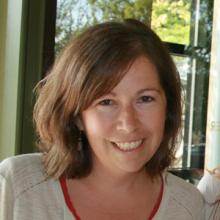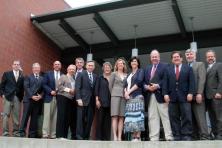To say that transportation is a headache for city leaders, businesses, residents, and employees in Hillsboro, OR would be an understatement. These challenges are partly the result of good economic fortune: Hillsboro has grown from a sleepy town to an employment center over the past decade to over 90,000 residents—with two consecutive expansions of a large Intel campus in the past year, hundreds of residential housing units coming online in the span of months, and new companies locating in the city on a regular basis.
Today Hillsboro’s leaders face a transportation conundrum familiar to many suburban cities across the country. Known as the “last mile” syndrome, it is effectively a transit vacuum that occurs when metropolitan areas run out of funding to extend public transit lines to outlying population and employment centers.
As City staff have noted, “transit routes run blocks away from employment sites and residential areas, which means inconvenience" for residents, employees, and employers. Often, the lack of affordable commute options results in large employers spending tens of thousands of dollars on private shuttle services for employees. Add to this equation the fact that transportation comprises over 15 percent of the community’s total greenhouse gas emissions, and you have a clear priority for Hillsboro sustainability director Peter Brandom.
When Brandom described the community’s energy consumption and associated carbon emissions at a December meeting of Metro, the regional planning agency for the Portland metropolitan area, he called out transportation as a major issue for the City. He presented the Energy Map that New Energy Cities produced for the City in 2012 as part of a joint workshop for city, business, and community leaders on the city’s energy future, to visually demonstrate how much transportation accounts for in the city’s energy and carbon emissions.
As Brandom recently said, “Even though cars may look different today, we are still getting around like we did 50 or 60 years ago. Driving alone in cars represents so much wasted capacity. Hillsboro is looking for different, more dynamic ways to get around.” Notably in Hillsboro’s case, City leaders want to think about emerging options for smarter transportation—not just laying down new roads and transit tracks.
Enter Mayor Michael Bloomberg—or, more precisely, Bloomberg Philanthropies, which in 2012 kicked off a Mayors Challenge calling for city halls around the country to submit creative ideas for persistent problems that local governments in the U.S. face. Hillsboro responded quickly with a transportation innovation: GoPoint.
If implemented, GoPoint would provide real-time information via internet, smart phone, and onsite kiosks that enable travelers to connect with carpool, vanpool, bikeshare, carshare, and other alternative mobility options according to their location, needs, and cost preferences. The program would leverage the regional transit authority’s existing trip planning platform that already offers “just in time” options for bus and light rail riders.
Although its earliest origins are in Germany, the GoPoint program builds most directly on mobility hub concepts that the Sustainable Mobility and Accessibility Research and Transformation (SMART) group at the University of Michigan has promoted around the country. Its most prominent American project is in Los Angeles, under the auspices of Fixing Angelenos Stuck in Traffic (FAST-LA). If Hillsboro wins the Mayors’ Challenge, GoPoint could be the first suburban application of the idea.
Of course, the devil’s in the details. The promise of connecting would-be carpoolers to one another has few technical or logistical barriers to knock down. In contrast, the diverse payment plans and online interfaces for car-sharing options make the possibility of centralizing on a single web application a bit more challenging and time-consuming.
As Brandom notes, however, the Northwest’s incredible technical capacity would be a huge advantage to working through these types of challenges. The very presence of Intel and other established IT giants, who have a clear stake in solving their employees’ transportation problem, make Hillsboro and the Northwest a natural laboratory for innovation. The alignment is clear, and at the end of the day, the real result could be both effective and lucrative nationwide: a simple, easy-to-use tool that people want to use as part of their daily lives.
What we love about this solution—and the Mayors’ Challenge in general—is the creative exchange it has already sparked. Locally, Hillsboro seems to have breathed new life into its transportation dialogue with service providers, employers, and stakeholders. Perhaps even cooler: all of the finalists (including both Hillsboro and Knoxville, TN, another city we featured in our July 2012 report) attended an Ideas Camp in New York City at which national experts provided constructive critique of their work, and the philanthropy gained fresh new insight about how to move the needle on fundamental problems facing American cities today.
Hillsboro’s preparedness is meeting a national opportunity, and if Bloomberg Philanthropies agrees, its solution could be a win far beyond its city borders.





